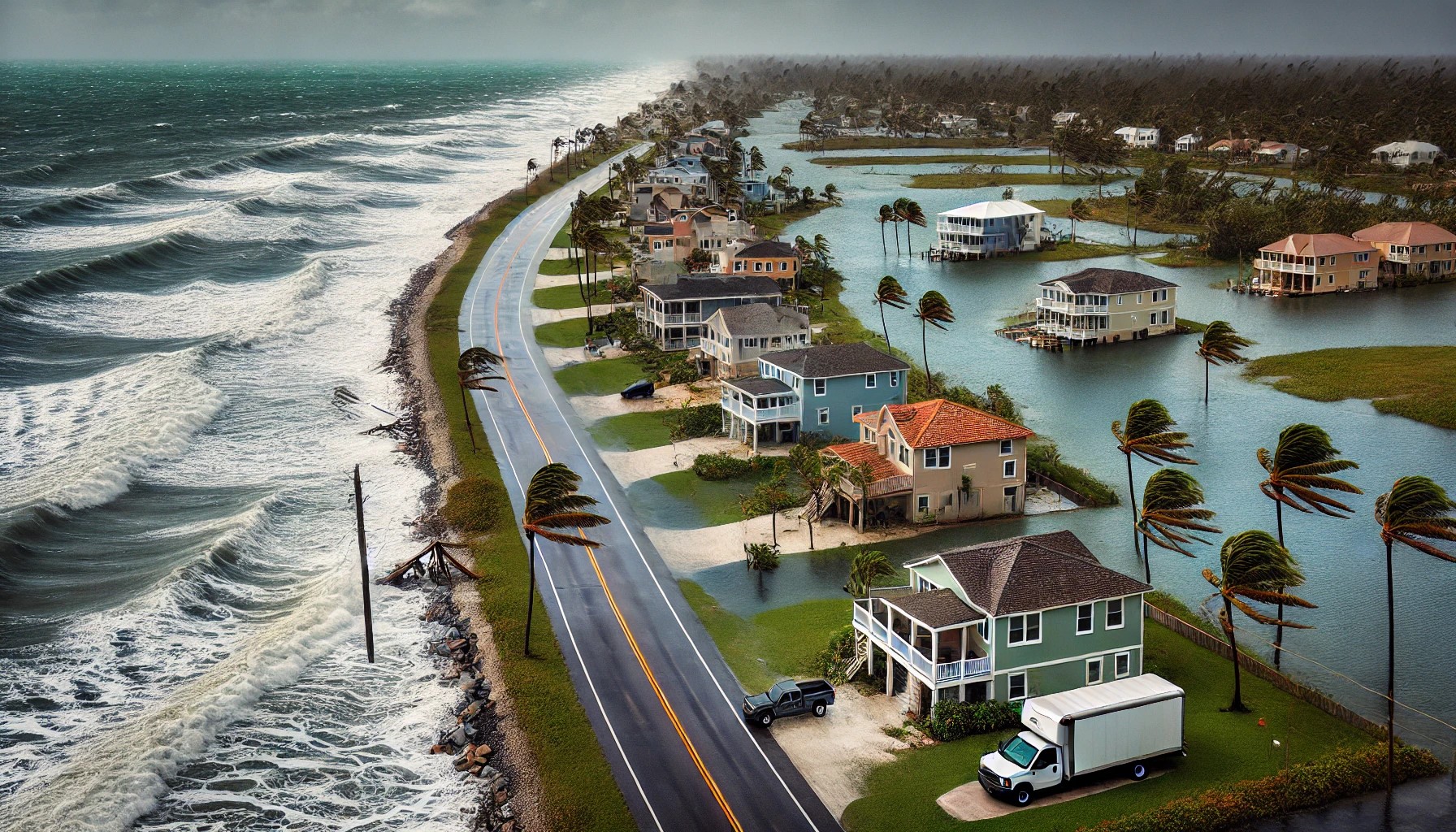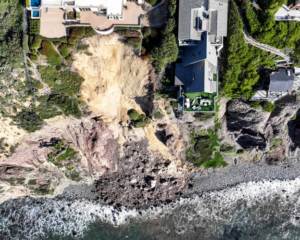Despite higher interest rates for mortgages and rising climate risks, Americans are still relocating, with a trend toward some of the riskiest parts of the country. Over seven million people moved to a different state in 2023, according to a recent New York Times article covering the StorageCafe report analyzing U.S. Census Bureau data. But the trend is clear: Southern disaster-prone states are attracting the most new residents.

Texas led the country in net migration, adding 137,582 more people than it lost. Florida closely followed with 136,750 new residents, while North Carolina, South Carolina, and Georgia also ranked among the top five. Many of these newcomers are leaving states with long-term population declines, including California (-259,000), New York (-186,533), Illinois (-89,936), and New Jersey (-66,994).
While economic opportunity, cost of living, and lifestyle may be drawing people south, there’s a glaring risk: These are some of the most disaster-prone states in the nation. As climate change intensifies hurricanes, floods, and severe storms, the places seeing the most population growth are also the most vulnerable to catastrophic weather events.
Disaster Hotspots: The Rising Risk of Popular Migration Destinations
Between 2021 and 2024, the Southeastern United States experienced several significant natural disasters, leading to multiple FEMA declarations. Each of the top five migration states has recently faced large-scale FEMA-declared disasters, highlighting the risks their growing populations must contend with, below you’ll see a few examples from the past few years:
Texas:
These events underscore the vulnerability of the Southeastern U.S. to natural disasters and highlight the substantial financial and human costs associated with such events in these disaster-prone states.
Between 2021 and 2024, the Southeastern United States experienced several significant natural disasters, leading to multiple FEMA declarations. Each of the top five migration states has recently faced large-scale FEMA-declared disasters, highlighting the risks their growing populations must contend with, below you’ll see a few examples from the past few years:
Texas:
- Severe Winter Storms (February 2021): From February 11 to February 21, 2021, Texas faced unprecedented winter storms, resulting in extensive power outages and infrastructure damage. The National Oceanic and Atmospheric Administration (NOAA) estimated the total damage at $21 billion, making it one of the costliest winter storms in U.S. history.
- Hurricane Beryl (July 2024): Hurricane Beryl impacted Texas from July 5 to July 9, 2024, leading to a major disaster declaration
- Severe Storms and Flooding (April–June 2024): Between April 26 and June 5, 2024, Texas experienced severe storms, straight-line winds, tornadoes, and flooding, resulting in another major disaster declaration (DR-4781-TX).
Florida:
- Hurricane Idalia (August 2023): This hurricane caused extensive flooding and wind damage across Florida. As of September 25, 2023, assessed damages reached approximately $216.1 million from over 21,252 insurance claims. Agricultural losses were estimated at $447 million, bringing the total to around $663.1 million.
- Hurricanes Milton and Helene (September/October 2024): Making landfall in early October, Hurricane Milton led to significant destruction. The federal government approved nearly $2 billion in assistance for states affected by Hurricanes Helene and Milton, including Florida. These funds were allocated for rental costs, food, debris removal, and infrastructure repairs.
Georgia:
- Hurricane Idalia (August 2023): After impacting Florida, Idalia moved into Georgia, causing damage exceeding $41 million.
- Hurricane Helene (September 2024): This Category 4 storm resulted in catastrophic damage across multiple states, including Georgia. The federal government allocated nearly $2 billion in assistance to six states affected by Hurricanes Helene and Milton, with Georgia among them.
North Carolina:
- Hurricane Helene (September 2024): North Carolina faced unprecedented flooding due to Helene, leading to extensive infrastructure damage. The storm caused nearly 100 fatalities across five states.
South Carolina:
- Tropical Storm Debby (August 2024): Debby made its second landfall near Bulls Bay, South Carolina, bringing dangerous flooding. The storm resulted in six fatalities and prompted emergency declarations to facilitate federal assistance.
- Hurricane Helene (September 2024): South Carolina experienced significant impacts from Helene, contributing to the nearly $2 billion in federal assistance allocated for recovery efforts across affected states.
These events underscore the vulnerability of the Southeastern U.S. to natural disasters and highlight the substantial financial and human costs associated with such events in these disaster-prone states.
The Migration Paradox: Why Are People Moving to Risky States?
So why are people flocking to states where natural disasters are frequent, costly, and dangerous? Several factors explain this trend:
- Lower Taxes & Cost of Living – States like Texas and Florida don’t have state income tax, making them attractive destinations for residents of high-tax states like New York and California.
- Job Opportunities & Business Growth – The South is home to some of the fastest-growing economies, drawing workers in industries like tech, finance, and manufacturing.
- Climate Preferences – Warmer weather, despite the risks, continues to attract retirees and remote workers looking for a more relaxed lifestyle.
What’s Next?
As climate risks increase, property owners in these disaster-prone states will need to invest in resilience to protect their booming populations. From hurricane-proof infrastructure to improved flood mitigation, proactive planning will determine whether these growing regions can sustain long-term success—or face even greater disasters ahead. Learn how Quoll can help property investors mitigate the risks.




